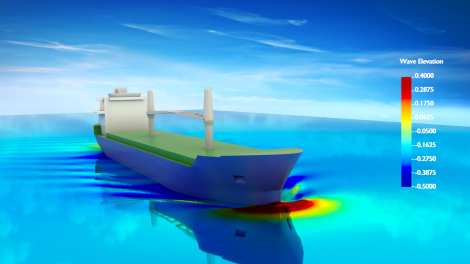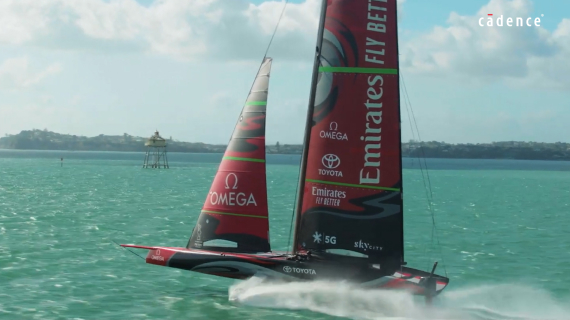Overview
High-Performance Fluid Flow Simulations
Leading CFD software for naval architects and marine engineers
Naval architects and engineers need the best tools for the job, and that is why we have created Cadence Fine Marine Solver, CFD software that functions as a virtual towing tank, replacing experimental facilities, or numerical sea trials, enabling engineers to design ships directly at full scale, with advanced, built-in automation features for speed and ease of use.

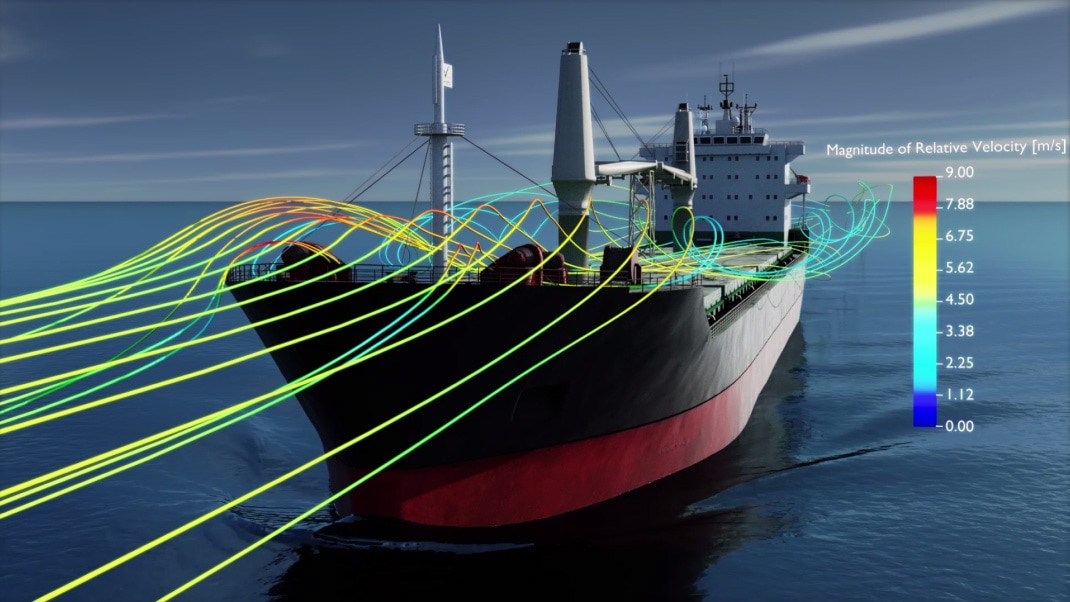
KEY BENEFITS
Pinnacle of Ship Simulation and Marine Engineering
With decades of solver development experience gained working with the world’s top naval architects, Fine Marine offers marine engineers dedicated, highly automated, and easy-to-use full CFD workflows for the design and optimization of any vessel.
Free Surface Flows
Fine Marine can be used as both a virtual towing tank and virtual wind tunnel. It has been developed with a total focus on flows involving free surfaces. This requires efficient free surface modeling considering both water and air, appropriate turbulence modeling, and efficient grid adaptation.
Reaching EEDI/EEXI Targets
CFD simulation is key to reaching the energy efficiency targets set out by the International Maritime Organization (IMO). The Energy Efficiency Design Index (EEDI) regulates emissions for new-build ships, and the Energy Efficiency Index (EEXI) measures CO2 emissions for all ships, rating them from A to E. Fine Marine offers the solution to calculating and finding the best efficiency improvements for ships. Assess performance and explore a wide range of design alternatives to gain efficiency and evaluate potential cost implications before any sea trial or retrofit takes place.
Adaptive Grid Refinement
Fine Marine features a variety of mesh strategies for bodies with motions: weighted mesh deformations (ship trim and sink), sliding grids (propeller rotation), and overset grids (complex motions, appendages). Adaptive grid refinement refines free surface during calculation and allows for different operating conditions to be calculated in one single mesh.
All kinds of boats are eligible for the C-Wizard: tankers, containers, high-speed crafts, sailing or luxury yachts, even hydrofoils and open-water propellers. No need to spend time setting numerical parameters. By specifying the physical inputs only, users receive a complete definition of the required simulations, including numerical aspects.
Thanks to the Rhino plug-in for Fine Marine, CAD models can be exported from the Rhinoceros interface directly to C-Wizard or to our meshing environment, hassle-free.
Main Applications
CFD Software Dedicated to Naval Architecture
Perform resistance, propulsion, seakeeping, maneuvering, and wind study calculations effortlessly, through a user-friendly, step-by-step process built on years of industry experience. Set up calculation matrices for different speeds, angles, sea conditions, or even geometrical variations in a completely automated way. Evaluate full-scale performance, in 3D, with absolute certainty; no extrapolation from scale models is necessary.
Resistance

Resistance calculation is a standard in Fine Marine and can be set up automatically with the C-Wizard. Thanks to Cadence's convergence booster and various methods like sub-cycling, quasi-static, and multigrid for the pressure solver, the RANS solver speeds up calculations for resistance cases by up to five times.
Propulsion
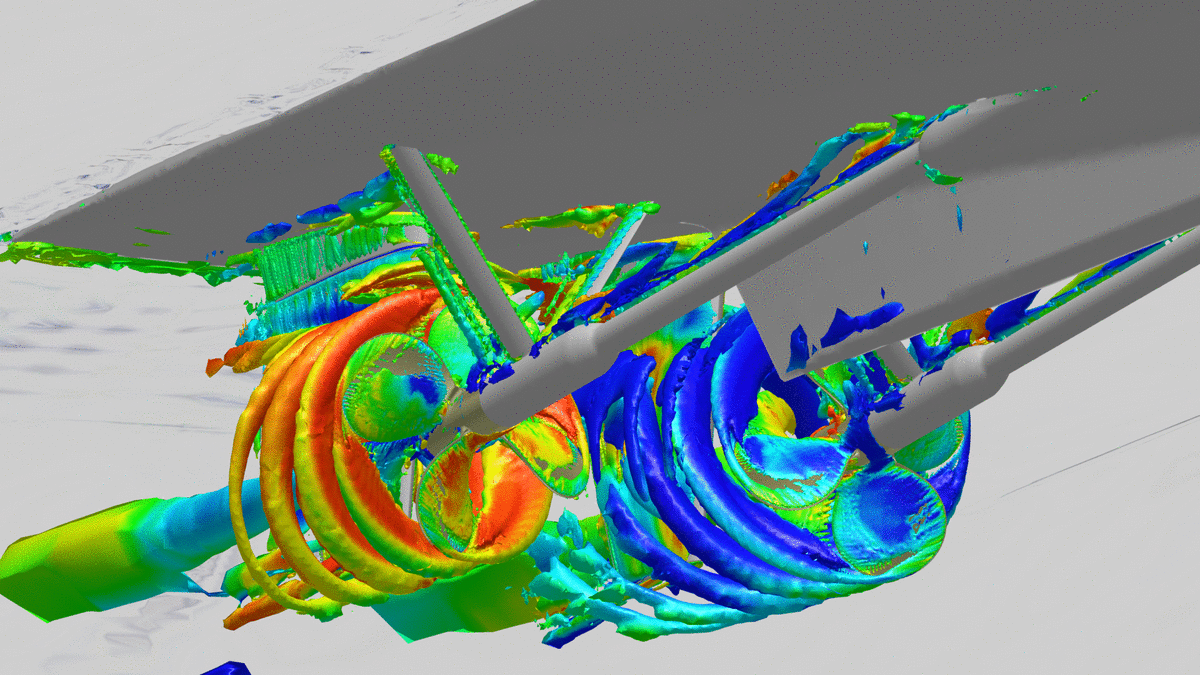
For modeling propellers and their interaction with the hull and appendages, the C-wizard has a dedicated module that fully and automatically takes care of the meshing and solver setup with the appropriate boundary conditions.
Large validation experience shows the importance of:
- Actuator disks for quick and accurate global trends
- Sliding grid approach for detailed propulsion analysis
- Turbulence modeling: from standard K-W to advanced DES models
- Ventilation and cavitation modeling
Seakeeping
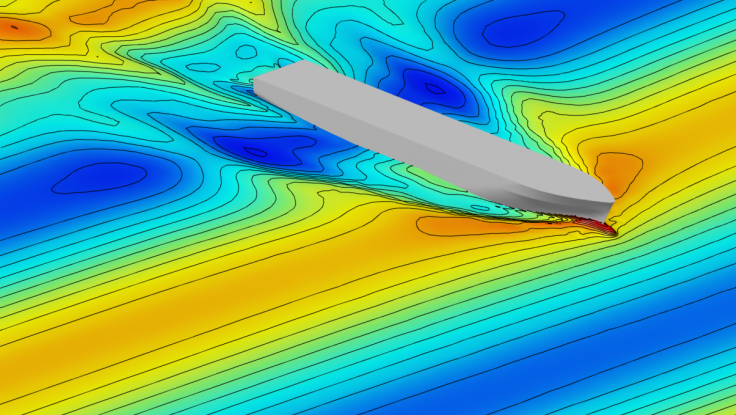
To model regular, irregular, or user-defined waves, especially in cases of strong waves of high amplitude, grid deformation algorithms are often challenged. Fine Marine has been tested on many configurations and essential modules have been implemented, such as:
- Wave initialization
- Good wave-damping strategy
- Adaptive grid refinement
- Overset capability
Waves can be generated from boundaries or by using internal wave generators. Algorithms have been developed to secure the damping of the waves as they evacuate the domain, rather than being numerically reflected.
Maneuvering
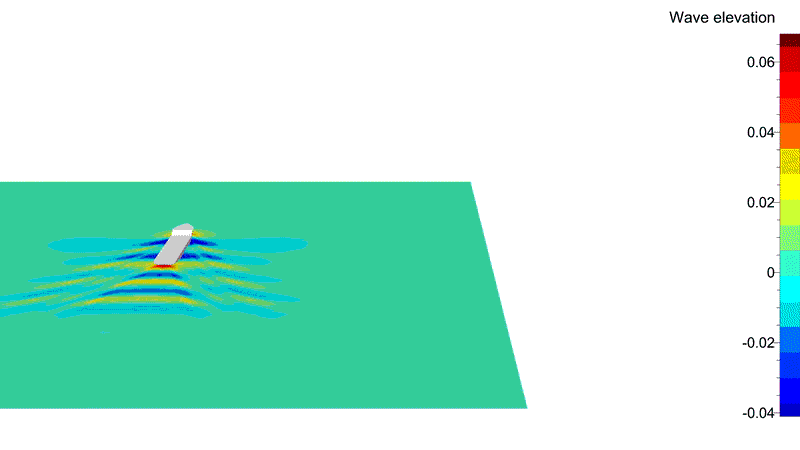
Complex motions at model and full scale can easily be simulated with dedicated approaches for maneuvering applications, such as:
- Zigzag
- Turning circle
- Course keeping
- Pure sway
- And more
To learn more about maneuvering simulations, watch this webinar:
Wind Studies for Ships

Fine Marine's wind study capabilities enable naval architects to replace wind tunnel testing with CFD. This area of ship design has become of prime interest to marine engineers in the context of maximizing passenger comfort.
In this customer case example, the main objective of Damen Group was to ensure safety and compliance with regulations of a particularly slender vessel they designed:
Optimize Your Design for Cutting-Edge Performance
For maximum performance, push your designs to the limit with Fine Optimization. From ships, tankers, and containers to high-speed craft and sailing yachts, optimization can be used to reach a wide variety of objectives, from saving precious fuel to gaining the winning edge in sailing races where every second counts:
- Decrease ship drag in calm sea or in waves
- Reduce dynamic trim angle amplitude for passenger comfort
- Improve propeller efficiency to reduce the required power
- Optimize foil design to perfection to reach maximum sailing speed
Read this example where hull shape design optimization saved a ferry company USD 337,000 per year and reduced their fuel consumption by 13%.
Features
Industry Solutions
Unlock Your Potential
Because fluids and fluid-structure interaction are in just about any system available, CFD simulations are at work in most industries. Some of the key industries where CFD is relevant are marine, commercial, aerospace and defense, automotive, biomedical, and petrochemical, as well as processing and chemical industries.
Turbomachinery

We’ve come a long way from water wheels, yet transferring energy between a rotor and a fluid is still the base mechanism behind the concept of turbomachinery.
Marine

Resistance, propulsion, seakeeping, maneuvering, and wind study.
Automotive

External aerodynamics and turbomachinery have long been a fundamental component of the automotive industry simulation challenge.
Aerospace

The challenge of aerospace CFD is connected to the modeling of turbulence (and transition).
Health
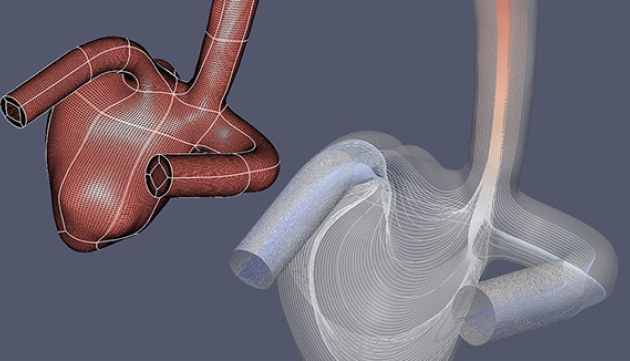
As health technologies advance into more careful and calculated domains of bodily control, so too does the need for advanced and accurate simulation and modeling.
RESOURCES
Expand Your Arsenal of CFD Resources Here
Industry Trends
Keep yourself knowledgeable about the latest and greatest industry conferences and product developments.
Customer Stories
Learn more about how our customers are using our CFD solutions to better their innovation.
View Customer StoriesBlogs, White Papers, Webinars
Find a host of talks, papers, and researched developed by Cadence for your solutions.
View All Blogs, Webinars and White Papers